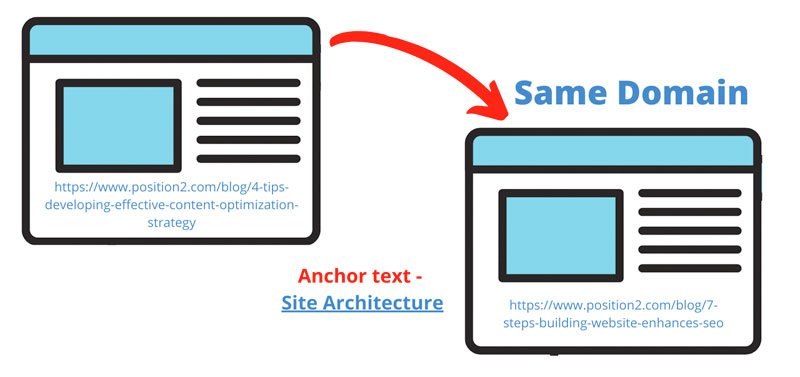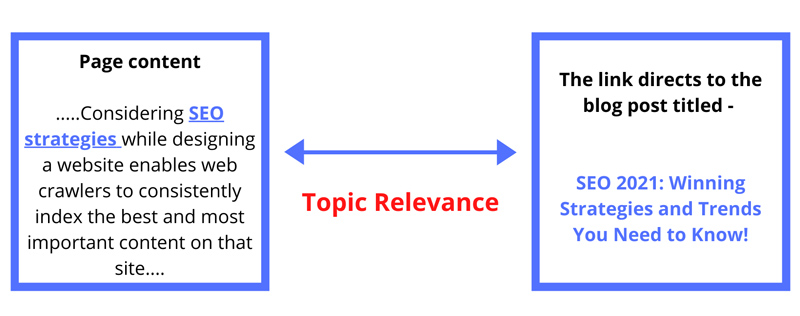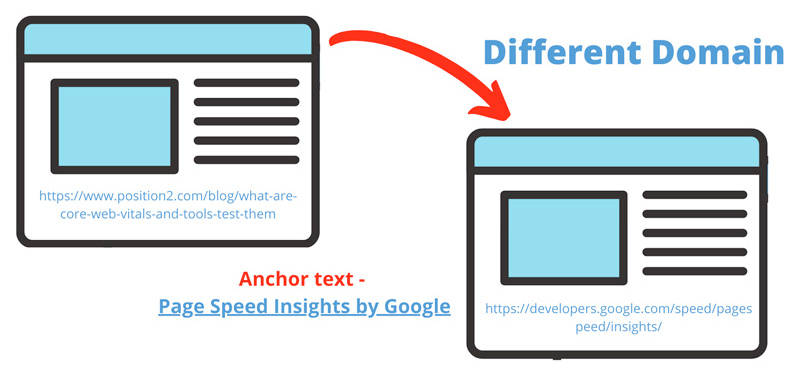“Link” is one of the most important terms used to refer to a relationship. A link simply means “something that connects”; a connection between two things or events, especially one that influences the other. The meaning itself makes links an integral part of anything that needs to be connected.
When it comes to SEO, there is a lot to think about: content, keywords, rankings, analytics, links and much more. In this article, we will focus on the importance of links, and we’ll look at both internal links and external links.
A website is a collection of web pages that are connected. An internal link is a link on a web page to another page or resource on that same website or domain. The connection of two pages via an internal link provides search engines with details about the structure and hierarchy of a website.
Internal links help search engines with the context to understand what the page is all about, how it is related to other pages and it’s prominence on the website. Hence, internal linking is an essential element to keep in mind when creating your SEO strategy.
Google (and users) will not find pages on the website unless they are linked or connected. Google uses internal links to find new content on the website. The main motive of an internal link is to aid navigation.
Apart from being a connector, internal links help in passing link authority between pages and improve rankings. When one page links to another, it passes a bit of its credibility to that page, increasing the possibility of the second page to rank. This credibility is frequently referred to as “link equity” or “link juice”.
Page authority is significant since it relates to the success of the individual page. The home page will often have the most authority in comparison to other web pages. So it is critical to link strategically from the home page to important pages that need some link juice to improve their authority. Add internal links wherever they will benefit your readers. Internal linking requires a user-centric approach to add value and information.
Google considers internal links as an integral part of a webpage. According to John Mueller, Google checks the click-depth of pages to find the most important pages on a website. Pages that are closer to the home page are more important than other web pages. A good internal linking strategy makes sure that the important pages are closer to the home page. At the same time, Google claims that using too many internal links on the same page can dilute their value. Hence, web pages must be linked strategically and resemble the website structure.
Internal linking strategy is one of the most underrated SEO strategies that work wonders when planned and executed well. Maximize the power of your internal links to improve user experience and expedite crawling process.
 Image – Internal Link
Image – Internal LinkEffective Internal Linking Strategies
We recommend three internal linking strategies:

There are various types of anchor texts that you can use. The most popular ones are:
External Links – External links are links that direct to a page on another domain. External links are an important ranking factor because they are considered as third-party votes. External links are a source of additional information that navigates the user to another domain. External links are more powerful than internal links as they pass the link equity from other websites and help in improving domain authority. Popularity and relevance are the two most important factors when it comes to linking to an external source.
 Image – External Link
Image – External LinkInternal links are crucial for SEO as they:
External links are pivotal, because they: